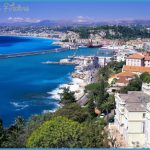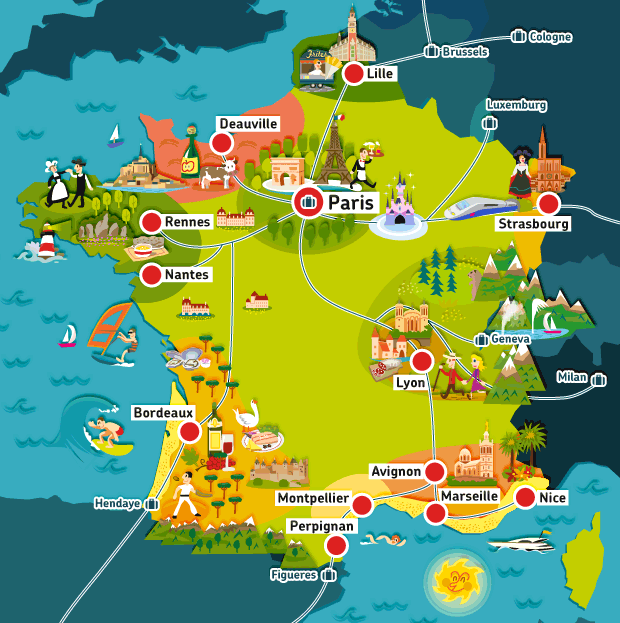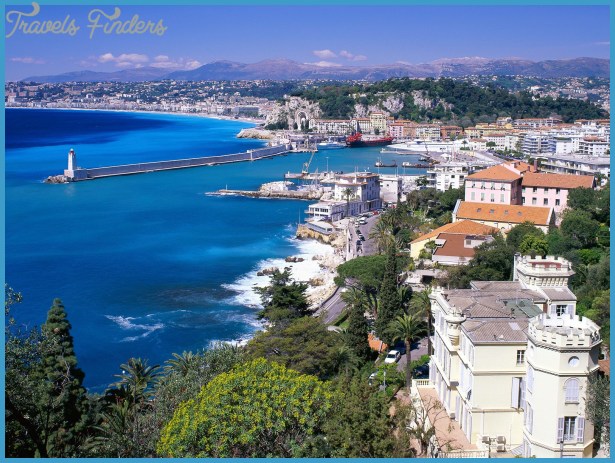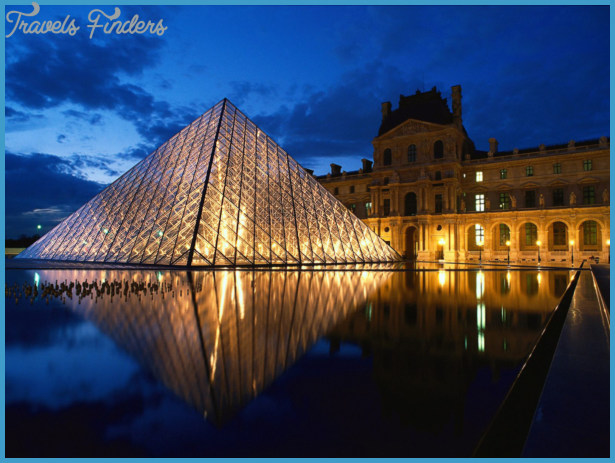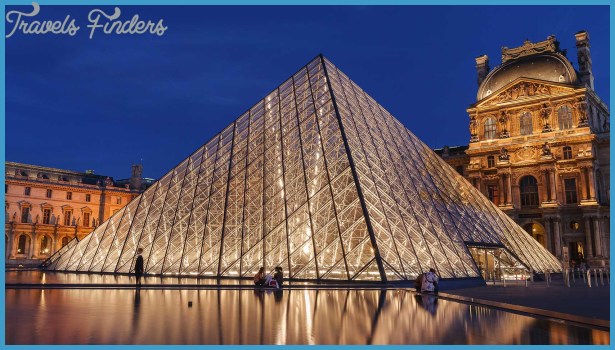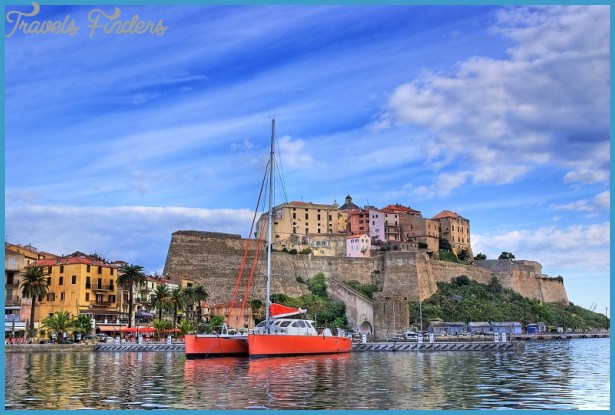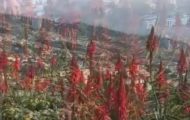France Travel
WHEN TO GO: Start in the late morning.
THEATRE DE L’ODEON. When you get off the metro, take a look at the impressive facade of the Odeon, Paris’s oldest and largest theater. (See 314.)
JARDIN DU LUXEMBOURG. Architectural excesses, beautiful lawns, miniature sailboats, and plenty of shady spots make this garden a favorite. (See 313.)
PANTHEON. The inscription reads: “To great men from a grateful fatherland.” The Pantheon indeed houses some great men (and women): its crypt contains the remains of Emile Zola, Marie Curie, Victor Hugo, and others. And the fatherland must have been grateful to have put them up in a building as beautiful as this one. (See 313.)
AU PORT SALUT. The traditional 3-course lunch at this boisterous former cabaret is pure gastronomic joy. (163bis, r. St-Jacques; see 306.)
RUE MOUFFETARD. The Mouff’ has held onto its charm since the 2nd century. Hemingway and Paul Verlaine both came to stay. Have some of (arguably) the best ice cream in Paris at Octave, no. 138. (See 309.)
JARDIN DES PLANTES. The Jardin’s rare plants and exquisite roserie draw visitors. The Galerie d’Anatomie is the unlikely star of the garden’s many museums. (See 314.)
BINSTITUT DU MONDE ARABE . This modern building has excellent exhibits, striking architecture , and a great (free!) view of the city. (See 321.)
SHAKESPEARE & CO. Stroll along the Seine until you reach Shakespeare & Co. No visit to the Latin Quarter would be complete without a stop in at this famed bookstore. (37, r. de la Boucherie; see 296.)
LE CAVEAU DE LA HUCHETTE. This club serves refreshing digestifs upstairs and great jazz downstairs. (5, r. de la Huchette.)
ILE DE LA CITE. If any one place is the heart of Paris, it is this small island. In the 3rd century BC, when it was inhabited by the Parisii, a Gallic tribe of hunters, sailors, and fishermen, the lie was all there was’to Paris. Today, all distance-points in France are measured from kilometre zero, a sundial in front of Notre-Dame.
CATHEDRALE DE NOTRE DAME DE PARIS. This 12th-to 14th-century cathedral, begun under Bishop Maurice Sully, is one of the world’s most famous and beautiful examples of medieval architecture. After the Revolution, the building fell into disrepair and was even used to shelter livestock until Victor Hugo’s 1831 novel Notre Dame de Paris (a,k.a The Hunchback of Notre Dame) inspired citizens to lobby for restoration. The intricately carved, apocalyptic facade and soaring, apparently weightless walls, effects produced by brilliant Gothic engineering and optical illusions, are inspiring even for the most church-weary. The cathedral’s biggest draws are its enormous stained-glass rose windows that dominate the north and south ends of the transept. A staircase inside the towers leads to a perch from which gargoyles survey the city. (M: Cit6. 01 53 40 60 87; crypt 01 43 29 83 51. Cathedral open daily 8am-6:45pm. Towers July-Aug. 9am-7:30pm; Sept.-June reduced hours. Admission 6.10, ages 18-25 4.10. Tours begin at the booth to the right as you enter. In English W-Th noon, Sa 2:30pm; in French M-F noon, Sa 2:30pm. Free. Treasury open M-Sa 9:30am-12:30pm and 1:306:30pm, Su l:30-5:30pm; last ticket at 5pm. 2.50, students 2. Crypt open daily 10am-5:30pm. 3.90, under-27 2.20.)
Within the courtyard of the Palais de Justice, which has housed Paris’s district courts since the 13th century, the opulent, Gothic Ste-Chapelle was built by Saint Louis (Louis IX) to house his most precious possession, Christ’s crown of thorns, now in Notre Dame. No mastery of the lower chapel’s dim gilt can prepare the visitor for the Upper Chapel, where twin walls of stained glass glow and frescoes of saints and martyrs shine. (4 bd. du Palais. M: Cite. Within Palais de la Cit& Open daily Apr.-Sept. 9:30am-6pm. 6.10, seniors and ages 18-25 4.10. Under-18 free.) Around the corner is the Conciergerie, one of Paris’s most famous prisons; Marie-Antoinette and Robespierre were imprisoned here during the Revolution. (Entrance on bd. du Palais, to the right of Palais de Justice. M: Cite. Open daily Apr.-Sept. 9:30am-6:30pm; Oct.-Mar. 10am-5pm. 6.10, students 4.10.)
ILE ST-LOUIS. The lie St-Louis is home to some of Paris’s most privileged elite, like the Rothschilds and Pompidou’s widow, and formerly Voltaire, Baudelaire, and Marie Curie. Paris’s best ice cream is at liBerthillon, 31 r. St-Louis-en-Ile. (M: Pont Marie. Open Sept. to mid-July; takeout W-Su 10am-8pm; eat-in W-F l-8pm, Sa-Su 2-8pm.)
EGLISE ST-LOUIS-EN-L’ILE. Louis Le Vau’s 17th-century Rococo interior is lit by a surprising number of windows. The third chapel has a splendid gilded wood relief, The Death of the Virgin. (19bis r. St-Louis-en-l’lle. sOl 46 34 11 60. Open Su and Tu-Sa 9am-noon and 3-7pm. Check with FNAC (www.fnac.com) or call the church for concert details; ticket prices vary, usually around 20 general admission and 15 for students).
The student population is the soul of the Latin Quarter named for prestigious lycees and universities that taught in Latin until 1798. Since the violent student riots in May 1968, many artists and intellectuals have migrated to the cheaper outer arrondissements, and the haute bourgeoisie have moved in. The 5eme still presents the most diverse array of bookstores, cinemas, bars, and jazz clubs in the city. Designer shops and cutting edge art galleries lie near St-Germain-des-Pres.


